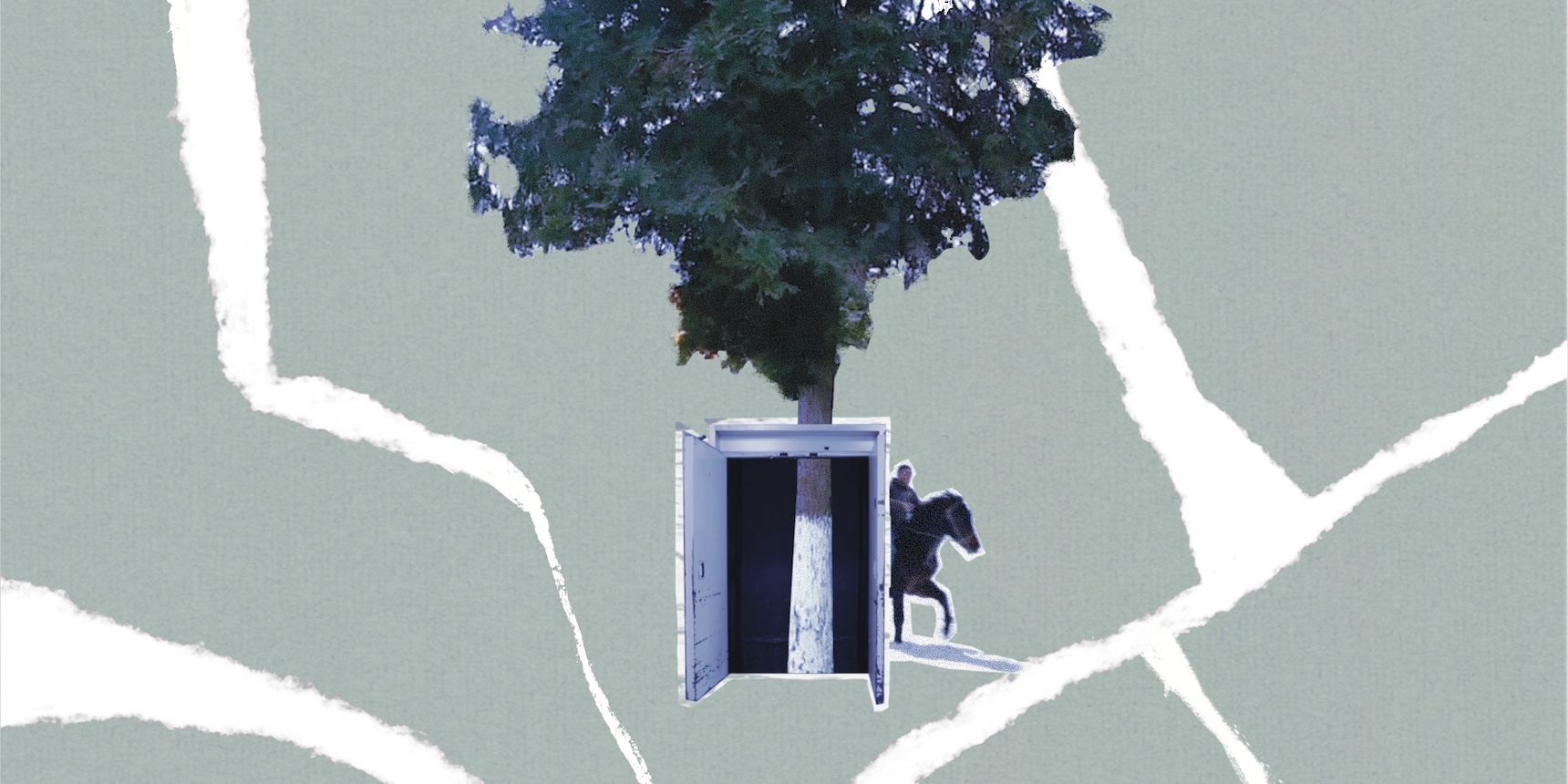

Documentary filmmaking could be called the foundational basis of cinema. During the hundred years of its existence, it has gone through countless transformations, has shaken off its imposed borders and transgressed all its genre limitations. While at the early stages of its formation at the dawn of the 20th century it was supposed to document and retell reality as precisely as possible, in the following decades the genre took on more functions – to propagate and convince, to explore and to analyze. After the first revolutionaries of documentary cinema, Robert Flaherty and Dziga Vertov, new filmmakers started to appear who would radically transform the genre. Two of them, Jean Rouch and Edgar Morin, developed the concept of “direct cinema” (fr.- cinéma vérité), which stood for a documentation of reality without any interference by the authors, such as background voiceover. This subgenre, also known as observational documentary, would become an endless source for discussions about and quests for the ultimate “real cinema”.
In recent years, Netflix, with its mythological number of subscribers, has played a major role in the “standardization” and widespread distribution of documentary cinema. It could be argued that the documentary films and series which are offered by the streaming platform all share a certain stylistic resemblance: a narrative built around one or few characters, for example, or consisting mostly of discussions and interviews, while editing and sound design are mostly used to keep the spectator absorbed. These stylistic similarities also apply to the content provided by other streaming platforms, such as Hulu, HBO and others that offer “entertaining” documentaries and, thus, reshape the image of documentary filmmaking within society.
Often these U.S.-produced films stand in strong contrast to the documentaries produced or co-produced in Europe that tend to stay closer to the Rouch-Morinian concept. Films made in this subgenre are typically screened at European film festivals and, if they are lucky, receive some limited theatrical distribution, after which they eventually fade away into the drawers of different streaming services. Usually these documentaries are more meditative, have little dialogue, their images consist of wide and observational shots, the editing is fluent, and instead of a musical score, natural (diegetic) sound is used. Even if the narratives in these films are created around particular characters, their stories usually do not have classical dramaturgical developments, but are fragmented and lack plots. The hybrid subgenre, another tendency in documentary cinema that started in the 2000s, blends the narrative styles of documentary and fiction cinema, thus blurring the fragile border between these two modes of cinema.
If we try to position Armenian documentary cinema between those two prevalent movements, it can be said that the documentary films made in the last decades, mostly made in co-production with Europe, tend toward the second category. The films made by Vardan Danielyan, Silva Khnkanosyan, Tamara Stepanyan, Inna Mkhitaryan, Inna Sahakyan, Garegin Papoyan, Vahagn Khachatryan, Aren Malakyan, Vahan Khachatryan, Arthur Sukiasyan, Arman Yeritsyan and other Armenian filmmakers (with certain exceptions) fit into the concept of observational cinema. Meanwhile, there are relatively few films made in the dynamic Netflix style of documentary cinema. Recently, the two films by Garin Hovhannisian, “I Am Not Alone” and “Invisible Republic”, are vivid examples of documentaries that attempt to replicate this mainstream modality, and it is not surprising that Hovhannisian’s first film was actually bought by Netflix.
The feature-length film “5 Dreamers and a Horse”, directed by Vahagn Khachatryan and Aren Malakyan, is one of the most recent documentaries produced in Armenia that has gained considerable international acclaim. After its premiere in Visions du Reel (Nyon, Switzerland) in 2022, it was selected by numerous other documentary film festivals, such as Leipzig, Jihlava, Montreal, New York, etc. What has helped the film’s impressive festival track record is, undoubtedly, its distinct narrational style. “5 Dreamers and a Horse” not only ticks the expected boxes of auteurial documentary cinema, but also dares to conduct its own experiments.
The film consists of three parallel stories, each told in its own distinctive narrative form, reflected in cinematography, choices of scenes and locations, music and editing. The first story is about Karen from Amasia in the north of Armenia, and is constructed via visual contradictions: at the beginning, the character passes through a snowy and dreamlike valley, only to suddenly be transferred through editing to a muddy and dilapidated road. The wide and peaceful panoramic shots are replaced with discussions, loud music in the claustrophobic interior of a car, and the scenes filmed from a distance are juxtaposed by close-ups of the characters’ faces. This segment also recalls some aspects of the road movie genre – Karen is constantly moving and searching. In addition, it includes scenes featuring traditional Armenian customs, such as funerals and engagement parties, which imbue the film with “exotic” elements.
Unlike Karen, the character at the center of the second story, Melania, never leaves the location she is in throughout the whole film. The camera stays with her in the hospital elevator where she works: apathetic and utterly indifferent, always directed at the middle of the characters’ bodies. Since all the actions unfold in the elevator, the space appears on the screen as a frame within a frame. The technique is even more emphasized when the camera leaves the elevator and films Melania from the outside – double-framing her and her environment in order to underline her “incarcerated” routine.
The third tale centers on two teenagers, Sona and Amasia, who also rarely leave their “fort” – a rooftop of a residential building. From the edges of the screen, the place seems to be situated in an open valley or in a remote desert, with no other buildings nearby. The camerawork here is markedly different as it shakes and flows in the hands of the cinematographer attempting to express the impatience, anxiety and troubled inner world of the teenagers. The only major constant shared by all three parts of the film is the use of dialogues through which the characters are presented to the spectator.
Although many of the discussed stylistic traits are common to countless contemporary documentaries, “5 Dreamers and a Horse” has aspects that are rarely seen in documentary cinema. One of these features is the film’s pronounced literary framework. Starting like a fairytale, it introduces the concept of the mythic tree, around which the stories are intertwined. The tree continuously reappears in all the segments in different guises: Amasia sings a song about a tree, a tree is bombed during the war in Artsakh, etc. The tree turns into a source for magical realism in the film and imbues the quotidian activities of the characters with a sense of mysticism, as in the scenes of an old woman foretelling Karen’s destiny through a coffee cup, or Amasia’s and Sona’s fortune telling through cards.
Enigmatic music composed by Avet Terteryan contributes to an atmosphere of enchantment that not only emphasizes a sense of mystery, but also fosters a feeling of disturbance, a premonition of failure, or an end of dreams. Visually, the forthcoming changes are announced with the use of pink that covers the screen for several seconds and then fades away, as if signaling the looming failures faced by the characters. To indicate these “approaching failures” or changes, Khachatryan and Malakyan use techniques and locations opposite to the ones employed earlier: Karen is pushed out from his “comfort zone” and into the chilling environment of the hospital, Melania is forced to leave her elevator after her job is made redundant and the girls are brought down from their rooftop idyl to perform at an underground rock concert. Thus, the characters who were earlier encased in the bubble of their dreams now have to face the mostly unpleasant and even cruel reality.
In one of the most notable post-modernist novels, Italo Calvino’s “Invisible Cities”, Marco Polo tells Kublai Khan about 55 invisible cities and when the Khan asks Polo to tell about his own hometown, Venice, Polo replies that all the stories were actually about Venice. In the same way the authors of “5 Dreamers and a Horse” employ different means of expression, visual narrative techniques and forms to speak of one country, one dream. Khachatryan and Malakyan manage to think outside of genre limitations, and to blend the elements of magical realism and cinéma vérité to create a strange fairy tale that resembles the one in which we all live. This multi-styled and versatile approach speaks of the emergence of more flexible, intellectual and unprejudiced concepts for the search of “truth” and character depiction in Armenian documentary cinema. This gives hope not only for modernization and internationalization of the local cinematography, but also for a more comprehensive analysis of our ambivalent reality through the language of cinema.
Et Cetera
Love and [un]Love in “The Miracle Worker”
Nune Hakhverdyan reviews the Armenian production of “The Miracle Worker” staged by the Gyumri Drama Theater and Yerevan’s Hamazkayin Theater about the life of Helen Keller, and examines the relationship between parent and child.
Read moreExhibition Outside of the Traditional Art Space
In Armenia, there are few exhibitions outside of the traditional art space environment, but at the same time, one can notice distinctive new trends emerging in recent years.
Read moreWhen Futurists Met Their Coveted Future
Even though a collectivist and masculine culture is predominant in Armenia, it’s often challenged by smaller segments of the society that are proponents of individualistic values and/or advocate gender equality.
Read moreArchive Fever: Vanadzor’s Bucolic Past in Hamo Kharatyan’s Photographs
How a tightly rolled bundle of negatives taken by Hamo Kharatyan in the 1930s slowly began to reveal astonishing, quite unfamiliar aspects of Vanadzor's life that were already on the verge of disappearing.
Read moreGyumri: A Century of Textile
In its quest to rediscover itself, Gyumri is continuing the traditions of the textile industry which in turn is inspiring new initiatives.
Read moreAbout Armenian Cinema
by the same author
The Armenian Dream: Michael Goorjian’s Film About Charlie the Repatriate
Michael Goorjian’s feature film “Amerikatsi” succeeded in infusing a sentimental and “positivist” tone inherent to Hollywood cinema within an Armenian reality, writes film critic Sona Karapoghosyan.
Read moreKafka in Artsakh
Garegin Papoyan’s film “Bon Voyage” manages to recreate a Kafkaesque world in the form of the Stepanakert Airport, where people follow a seemingly unreasonable system, and continue to do their work with incredible persistence, without questioning its meaning.
Read moreWaiting for Spring…
In this review of the film “It Is Spring” dedicated to the Artsakh conflict, Sona Karapoghosyan writes that cinema should be a tool for critically revealing and interpreting the world, and not a bandage to hide our collective complexes and fears.
Read moreThe Cinema Screen: A Political Battlefield
Mher Mkrtchyan has made a marked and oppositional political film, which, however, is too superficial and collapses under the incredible transparency of its agenda, writes film critic Sona Karapoghosyan.
Read moreDid the Wind Drop? Nora Martirosyan’s Optimistic Drama From Artsakh
Director Nora Martirosyan’s film “Should the Wind Drop” reveals the frustrating situation surrounding the airport as a starting point to delve into the history, problems and spirit of Artsakh.
Read more“Where Are You, Soghomon?” Arman Nshanian’s Melodrama About Komitas
“Songs of Solomon” promises to tell the story of young Komitas but ends up disappointing as the direction drastically changes, turning into another tragic film about the Armenian Genocide and Komitas simply a faded symbol emphasizing a lost culture and history.
Read more











